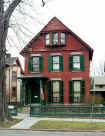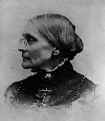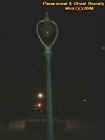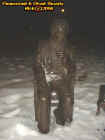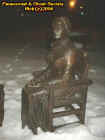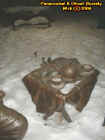|
|
||
|
Susan B. Anthony Square also at one time known as Madison Square which in the 1970s that is when the named changed. It displays Fredrick Douglas who was a an escaped slave who sought to end slavery and Anthony having tea and talking as if they were sitting on the porch of her house. The park near the house where Susan B. Anthony resided for over 40 years is surrounded by many Victorian houses that were built from the 1800s. Some of the mansions are very haunted but they symbolized the middle class of Rochester and still today many stand. Susan B. Anthony was one of the first woman to vote and was arrested in 1872 because of her attempt. So another wards what I am trying to get at here is there is alot of history to her house and the park which is right across the street from it. Perhaps this is why the park itself is so haunted over the years many passed some very prominent who would sit on Anthony's porch and talk about civil rights so the house served as her headquarters for many years. Perhaps this is why I chose to investigate this place but I feel that perhaps the park at one time served as some burial ground this is the feeling I captured as I slowly walked around. It is as if it was a potters field and the park was built over it to cover its true meaning. But the park itself has alot of energy even today as it served a purpose and perhaps this is why spirits come to rest here. Often people when they hear about ghost they think about haunted houses not pleasant parks with trees and benches. However the park served as a place for women's rights gatherings many people spent there life fighting for those lives which in turn of course would leave many spirits restless or still perhaps a part of the park because of what it symbolized. I spent more time at the park then the Anthony home which is now used as a museum. But I have accomplished everything you can think of dealing with Susan B Anthony. I have been to her gravestone, the hotel she use to stay at, her house and now the park which she gathered many to convey equal rights for women. Below you will find a little more history about Anthony herself and perhaps I even captured her on film. So take a stroll with us past the old lamps, wood benches, copper statues, twisted trees into this old historical park. © By Rick-AngelOfThyNight Susan Brownell Anthony (1820-1906), reformer, suffragist
|
||
|
|
||
|
|
|




